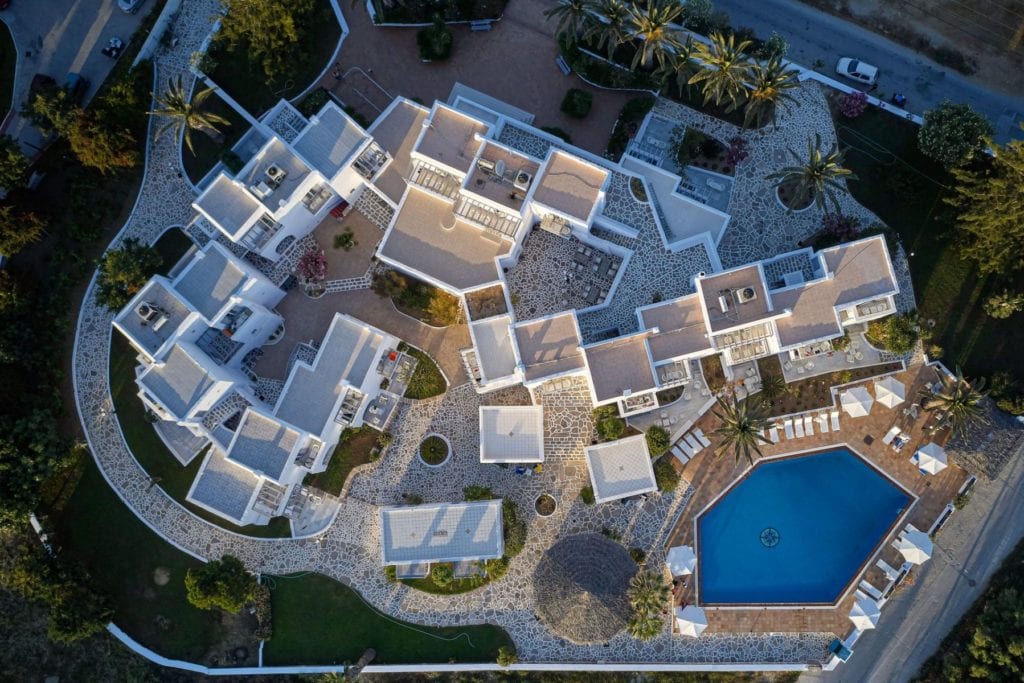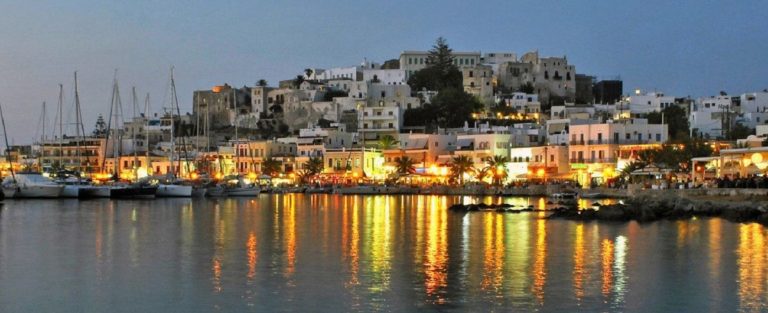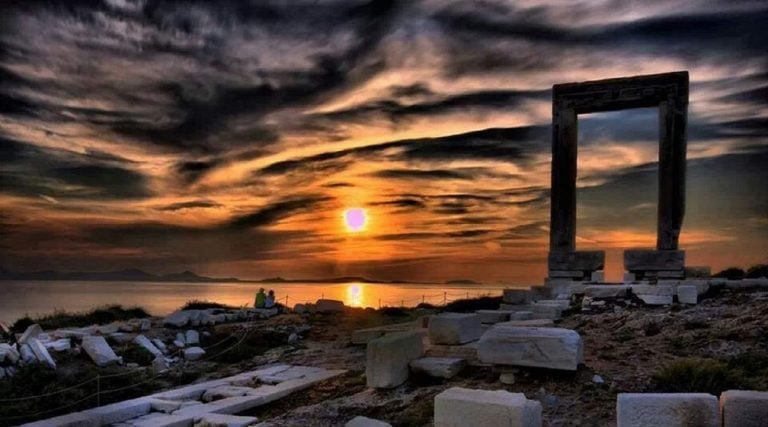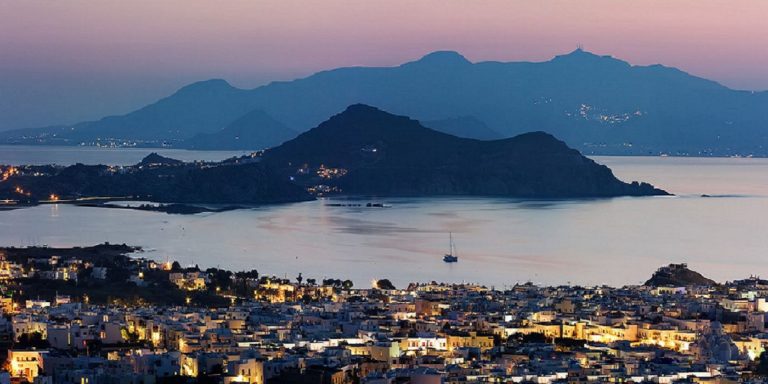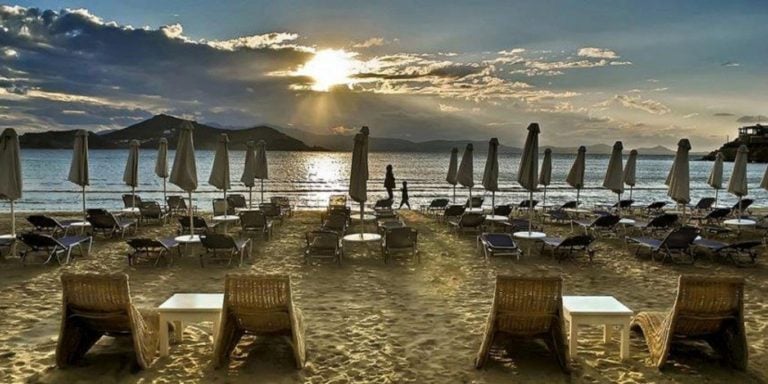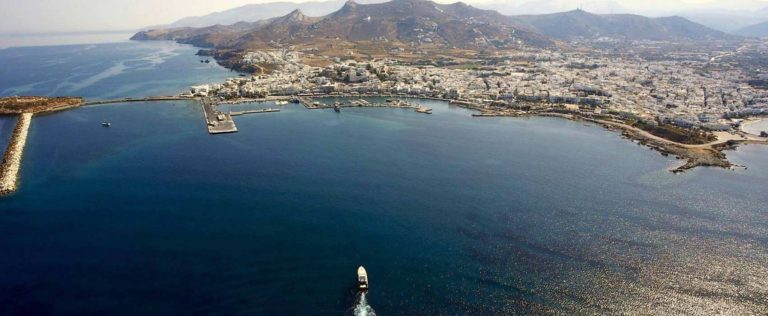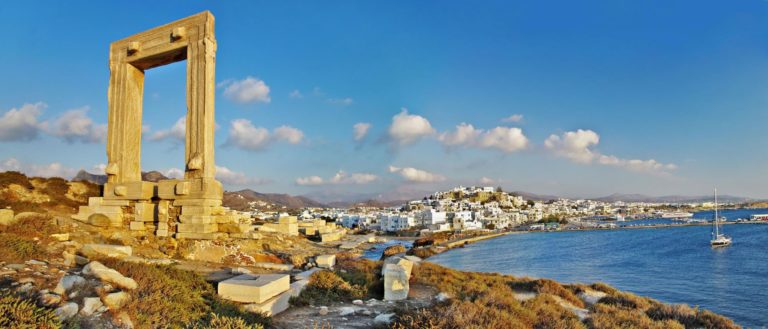
Location
Discover the beautiful island of Naxos!
Galaxy Hotel is located in the south-western part of the town of Naxos (Chora), just a few steps from the Blue Flag sandy beach of Saint George. Ideally located in the centre of the coast, it offers easy access to all of Naxos’ attractions.
How to reach us
The journey starts on board and Blue Star Ferries. With daily morning departures from Piraeus, you will travel to Naxos fast and comfortably.
Learn more about the routes and prices: +30 210 8919800 and www.bluestarferries.com.
Don’t forget that you can get to Piraeus by train, whose station is right opposite the ferry.
When arriving in Naxos, the distance is 8 minutes by car or 2.3 kilometers.
With Blue Star Ferries you can also travel from the nearby islands of Santorini, Paros & Mykonos.
Distances
- “Portara” (the big door of Apollo’s Temple) on the islet of Palatia: 1,5 km
- The remains of the Mycenaean settlement in the square opposite Naxos Cathedral: 1,3 km
- The Castro, the fortified medieval town of the Venetians: 1 km
- The ruins of Marco Sanudo’s Castle, the Catholic Cathedral and the Crispi’s Tower: 1 km
- The Archaeological Museum and the Ursuline School: 1 km
- St.George beach: 50m
- Water sports centres: 200m
- Mini market: 150m
- Supermarket: 300m
- Main square: 600m
- Hospital: 800m
- Restaurants, coffee and cocktail bars: 200m
- Port: 800m
- Airport: 1,5 km
- Bus stop: 200m
About Naxos Island
Naxos island is a big island in the heart of the Aegean Sea and its sea routes, with imposing mountain massifs and fertile valleys, inhabited by cheerful people with a tradition in music and dance, and full of beauty that enchants visitors.
With its long history, important monuments and intense tourist life, it occupies a distinct place among the Cycladic islands. No matter how many days you stay on Naxos, there will always surely be more hidden niches to discover, beaches you haven’t seen, towers and forts you did not have time to visit, ancient temples whose secrets remain a mystery.
If you were asked how you imagined the place where Zeus, the father of the 12 ancient Greek gods, was raised, chances are your reply would include the following: fertile, imposing, exuding primeval majesty.
If you were asked what you imagined to be the dominant features on the island where Dionysus, the god of merriment, was born and raised, you would probably include fun, song and dance.
If, finally, you were asked how you imagined the scene of the wedding of Dionysus and princess Ariadne, you would probably respond, “Enchanting, almost magical…”. This is Naxos.

